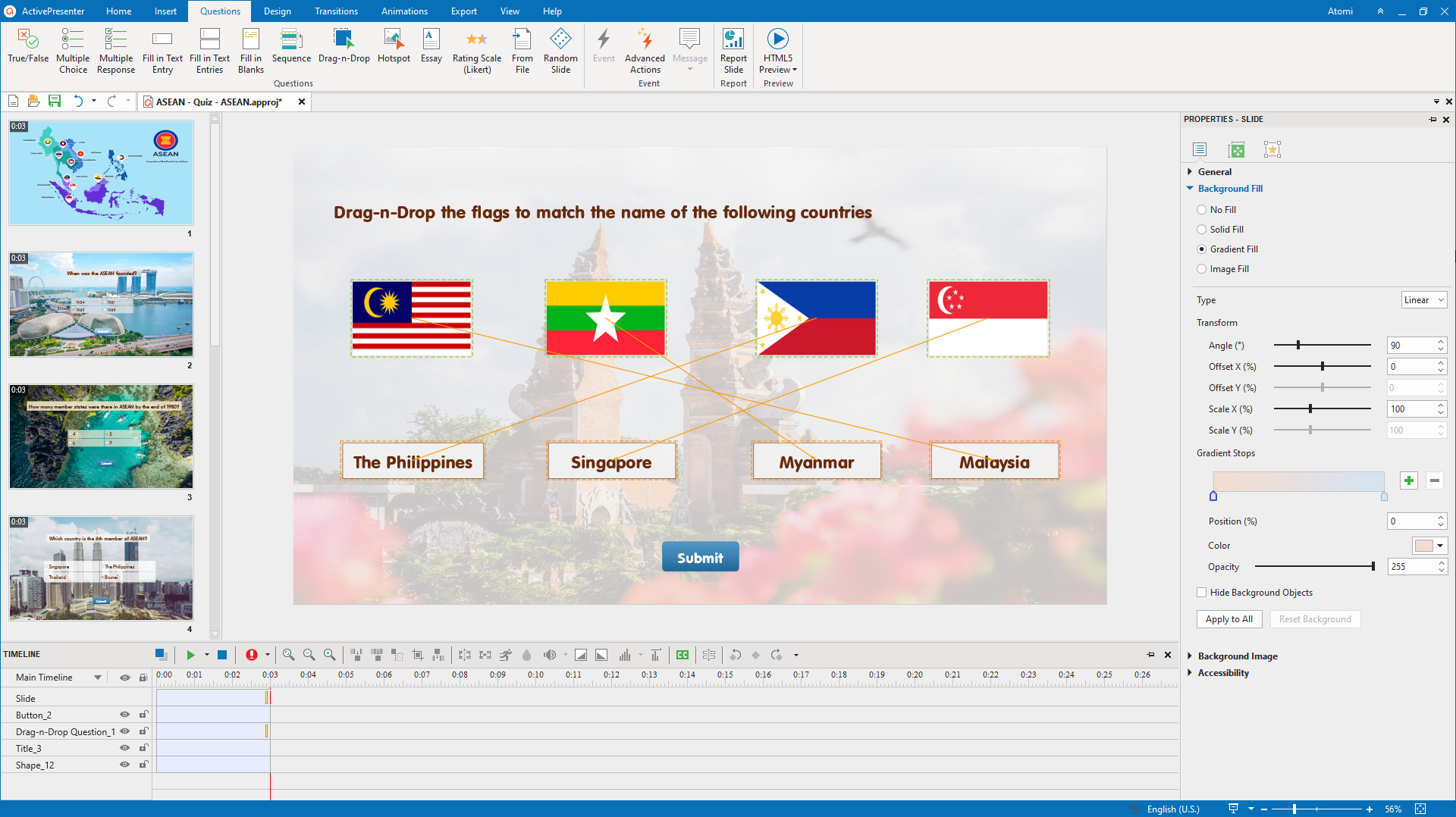Online exams gradually become popular in assessing students and candidates. Let’s learn some tips for creating online exams.
Take a moment to imagine how students’ life would be without regular tests and exams. They would never need to review and practice what they’d learned. Instead of that, students would tend to play around for the whole semester. The lack of exams made it difficult for teachers to determine a student’s true abilities. Without any pressure, students could easily lose motivation to study.

The example above highlights the importance of testing. So far, paper examinations have been the standard and preferred. However, as the COVID-19 pandemic breaks out globally, online exams seem to prevail over traditional ones. Teachers get used to preparing for online exams. So, what should a teacher know to make online exams for students? To those who are looking for some tips for creating online exams, this blog is what you need. Let’s check the 7 tips described in the next part.
Transitioning to online exams can feel daunting, but it doesn’t have to be. Before we delve into our top 7 handy tips for creating effective assessments, consider how ActivePresenter can streamline the entire process. From designing engaging question types to tracking student performance, ActivePresenter is an all-in-one authoring tool which lets you bring these tips to life seamlessly. Explore ActivePresenter and start creating better online exams today!
7 Handy Tips for Creating Online Exams
Preparing for an online exam is similar to, but also different from, a paper exam. The following 7 handy tips will clarify the issues to keep in mind when creating an online test.
#Tip 1. Specify the Test-Takers
Specifying who will take the test is the first one of the tips for creating online exams. Just like when creating a paper exam, teachers need to determine who will take the online exam. What grade are your students in? Is there a big difference in the level of students? The age and level of test subjects will be the scope for teachers to make appropriate test questions. An ordinary 2nd grader cannot take the test of 5th graders. In a class, students are the same age but their abilities are different. Some are quick learners, while others learn more slowly. This makes teachers have to consider and create suitable questions for all students.
#Tip 2. Decide on the Kinds of Exams
The format of the exam also affects the way to create it. A short test at the end of a lesson will be different from a midterm or final exam. For instance, a short test of about 15 minutes will have a few questions. These questions are usually about a certain lesson. The purpose of the test is to find out whether the students recognize and understand the underlying problem. The midterm or final exam, however, will have more questions. The content of the exam covers many chapters studied. Along with testing knowledge recognition and understanding, these exams require students to apply their knowledge. Students need to apply rules and formulas to solve problems.
#Tip 3. Choose Sources of the Exam’s Questions

Choosing a question source is also one of the tips for creating online exams. The source of the questions is usually textbooks or syllabi. First, teachers should choose general knowledge that students need to understand. This is the minimum requirement for students. Then, select the issues that are highlighted in the notice or exceptions. This will test the student’s understanding. When asking a question, the context must pose a direct question or a specific problem. Do not quote the same sentences from textbooks. The questions should be clear and understandable to all students. Furthermore, teachers can consult practice books, advanced books, and the Internet. Teachers may find questions to help classify students there.
#Tip 4. Select Types of Questions
The types of questions in an exam may vary depending on who takes it and its purpose. Common questions are as follows:
- True/False Questions: This type of question helps to test a wide range of student knowledge. It is suitable for testing students’ recognition. Therefore, it isn’t suited for good students.
- Multiple Choice Questions: This is the most common question type. It’s suitable for all levels of students. The more options there are, the more students are forced to make judgments. As a result, it is highly efficient and reliable.
- Fill in Blanks Questions or Fill in Text Entry Questions: This one is highly recommended to test students’ understanding of principles. It pushes students’ memory and draws a logical conclusion.
Each question type has its advantages. Teachers can choose the types of questions flexibly to create suitable exams for their students.
#Tip 5. Design the Look of the Exam

When taking an online exam, the test-takers will need to look at a computer screen. This makes students more prone to eye strain than doing paper-based tasks. To reduce this situation, teachers should design the view of the test reasonably. For example, with multiple-choice questions, teachers can create a 1-page layout with 2 questions. Each question has 3-4 answer options with reasonable line spacing. The answer selection buttons must be easy-to-see. A basic text font like Arial is a good choice for the entire test. Also, text size should fit one page, not too big or too small. In addition, the text color needs to be contrasted with the background, for example, white background – black text. Otherwise, when doing the lesson, students will be easily dizzy. For younger students, teachers can also add pictures related to the question. If adding these, teachers might consider using Hotspot and Drag-n-Drop questions.
#Tip 6. Prevent Cheating
Students can find thousands of online exam tricks on the Internet. So how to prevent cheating in online exams? Schools may spend a lot of money buying cheating detection software. However, to reduce costs, teachers have their ways to limit this. First, establish rules for the exam. Teachers need to tell students in advance what can and cannot be done during the exam. Second, use objective questions as introduced above. Keep in mind that shuffle answers or create random questions so that students can’t pass it along. Third, set a time limit for the test. The teacher can set a timeout for each question of about 30 seconds. Alternatively, use a countdown timer for the whole exam. This leaves students with no time to seek outside help.
#Tip 7. Test the Exam
Another must-do among the tips for creating online exams is to test them. This helps the teacher to check the questions and answers in the exam. Entering many questions at the same time may lead to entering the wrong data. Typing errors and misspellings are also detected and corrected. Then, several teachers can work together to ensure the accuracy of the test. If there is a problem, they can discuss it and come up with a solution. Finally, to avoid technical problems. It could be the fault of the computer, camera, or Internet connection. In addition, teachers can prepare mock tests for students. This helps them experience the devices, select answers, and submit assignments.
Final Words
Now, it’s time to use those tips for creating online exams. If you need software that integrates features to create one, ActivePresenter, our most famous eLearning authoring tool, is an optimal choice. With this app, you can create different types of questions for your tests. It also allows you to add annotations, media, and interactions such as buttons, checkboxes. After that, export the test to HTML5, SCORM, and xAPI packages. Finally, share it with students. In addition, you can also make use of other features such as screen recording or creating eLearning lectures. Check out the Tutorials page and YouTube channel for more details about this all-in-one software.
See more:
How to Assess Students Learning Online